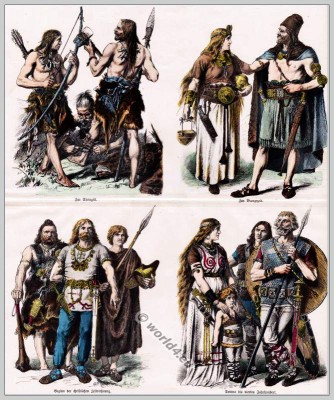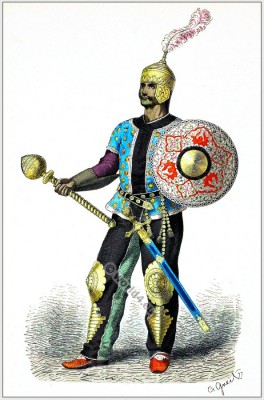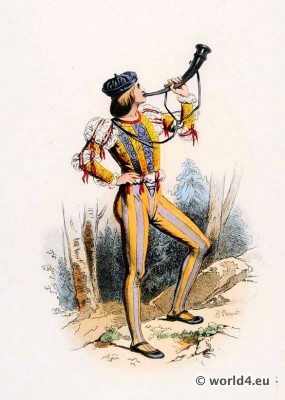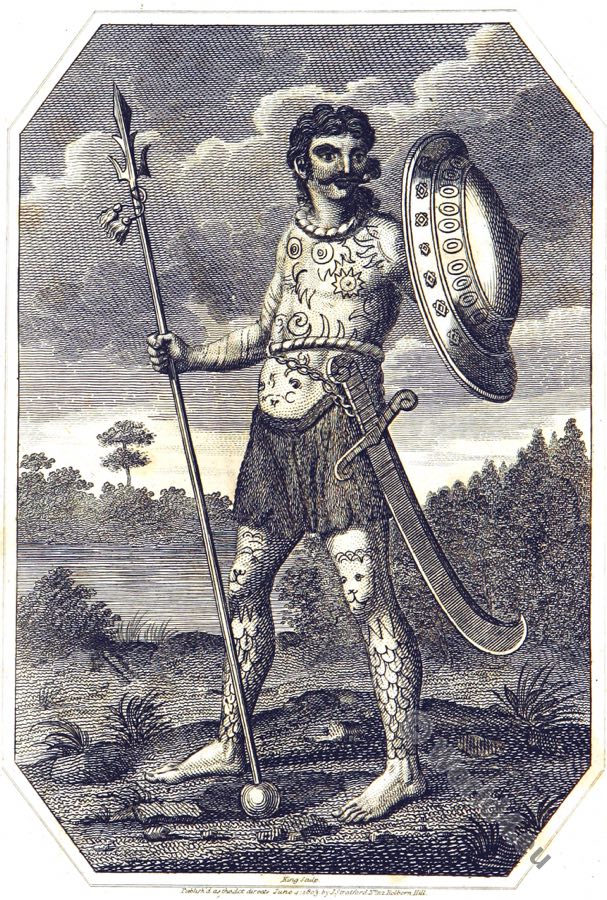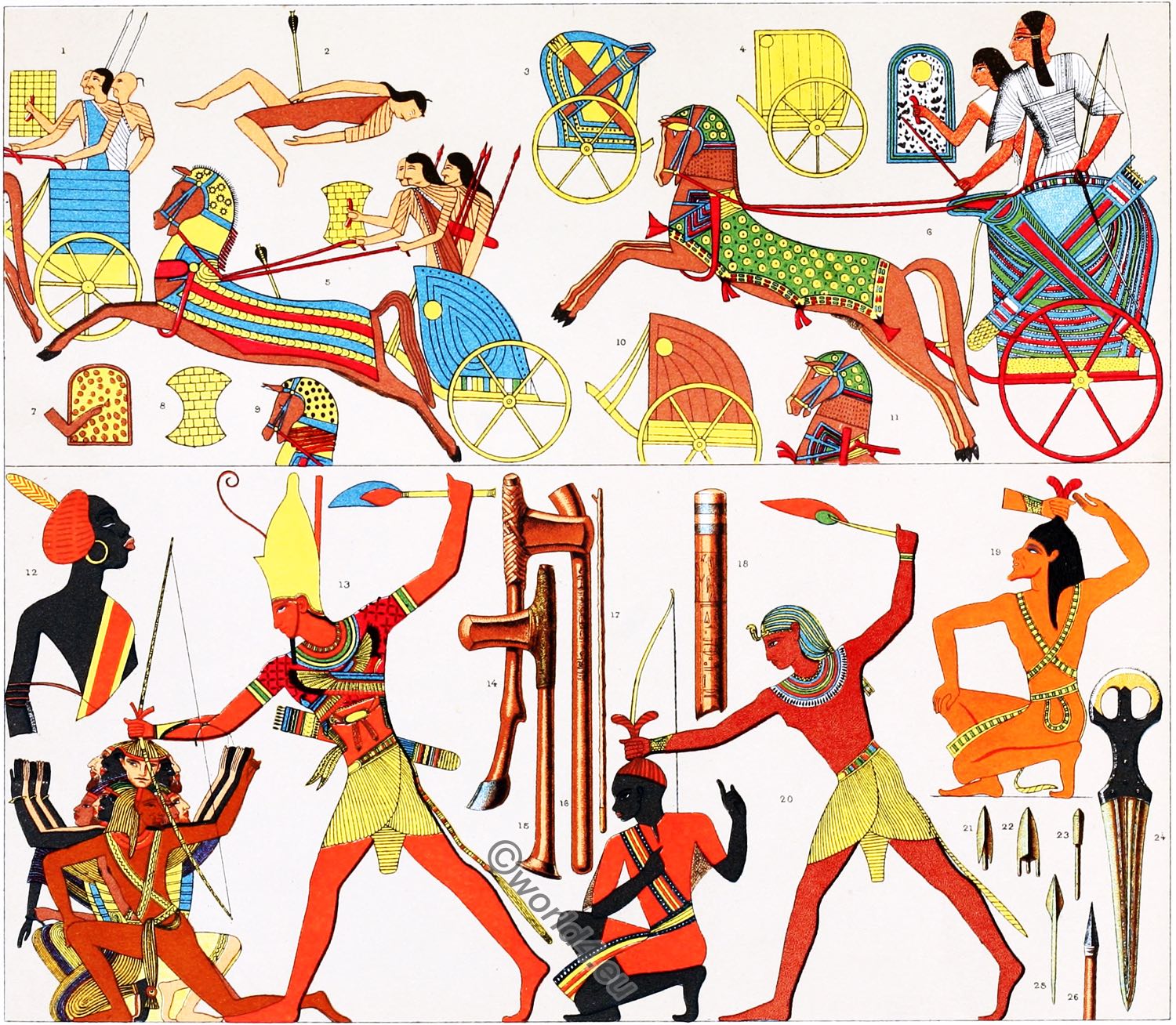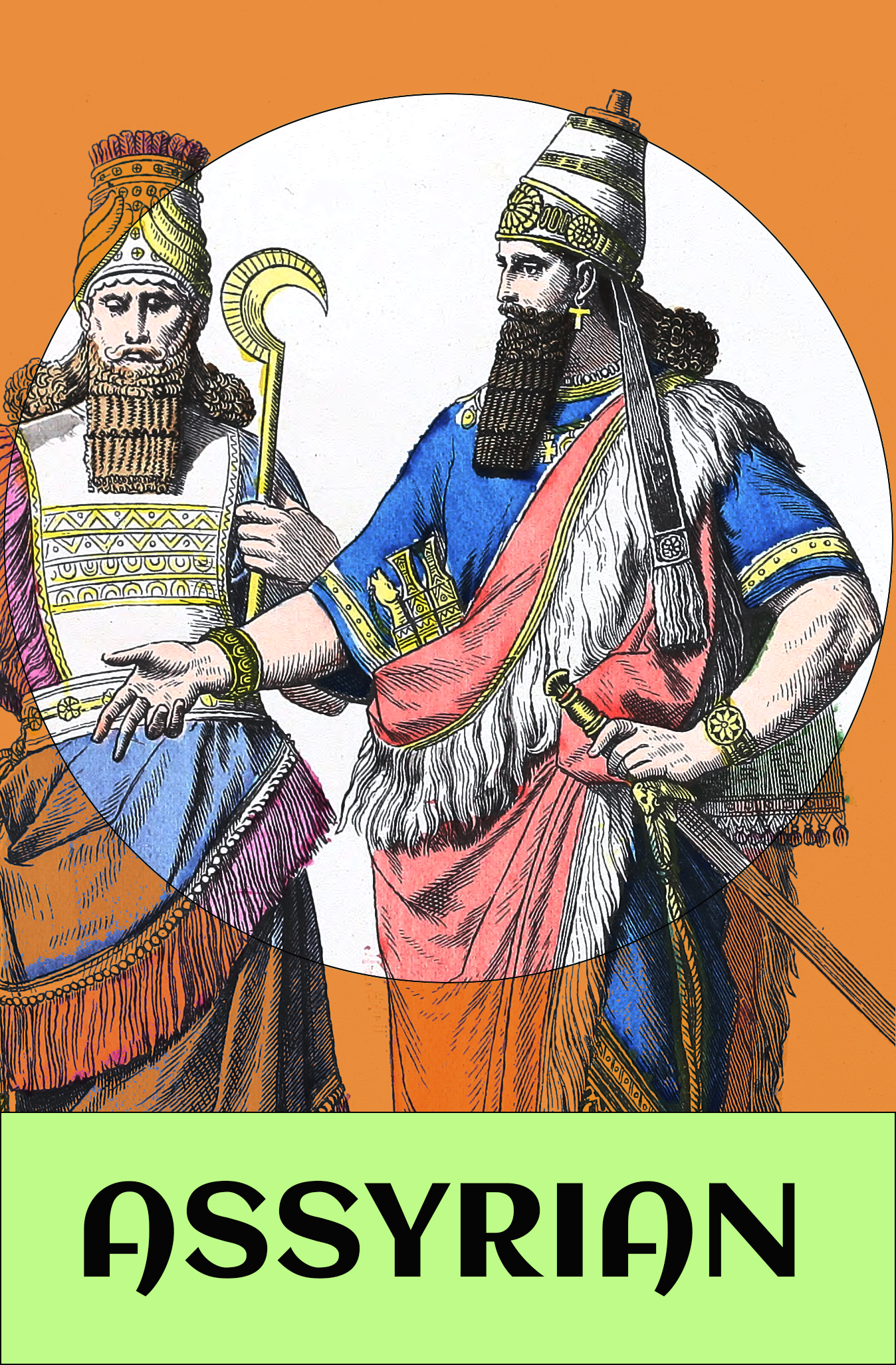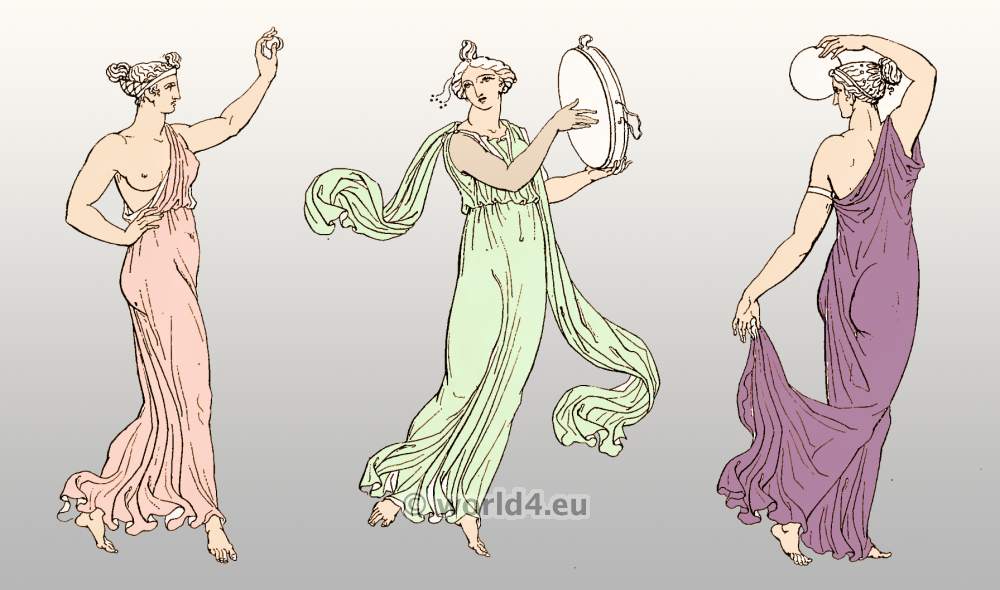Millions of men and women in these early ages were content with two or three garments of a similar description, whatever their name or the material of which they were composed; there were, however, other millions whose costume at the same period presented an important addition, so markedly characteristic of a distinct origin that it deserves, I think, more consideration than it seems to have hitherto received.
Trousered and Trouser less nations.
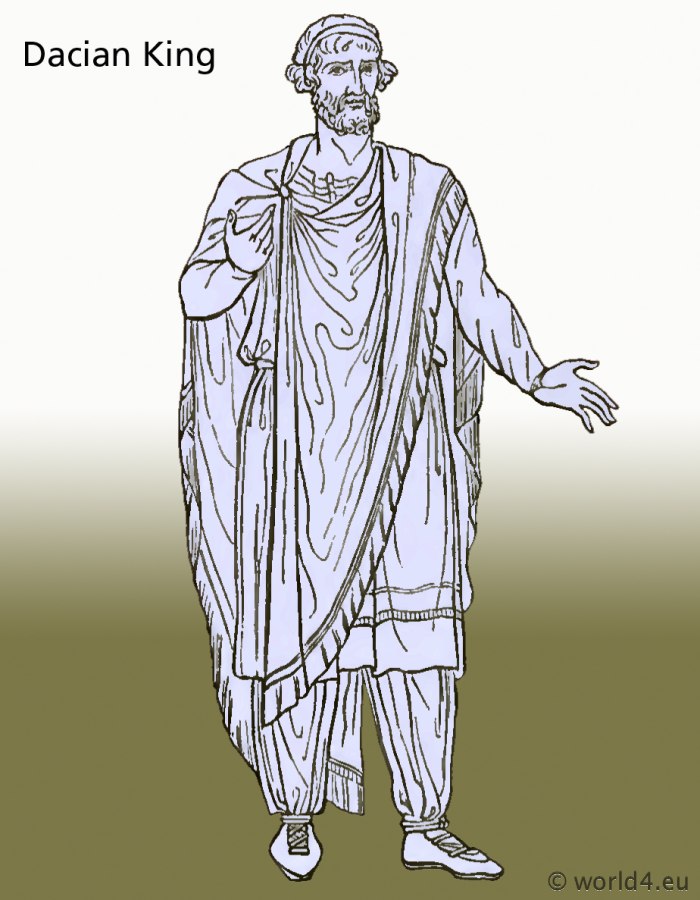
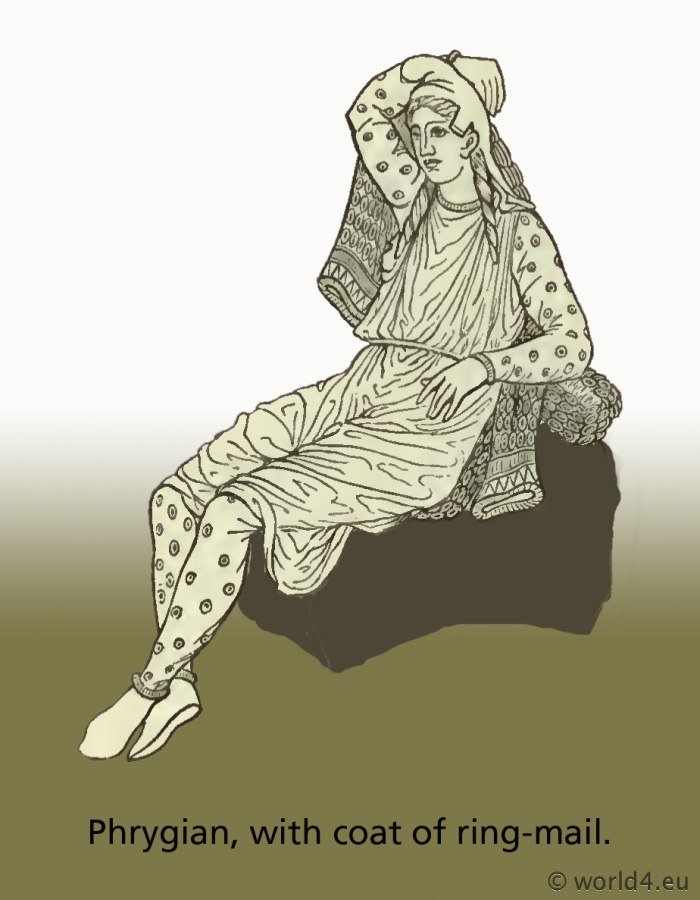
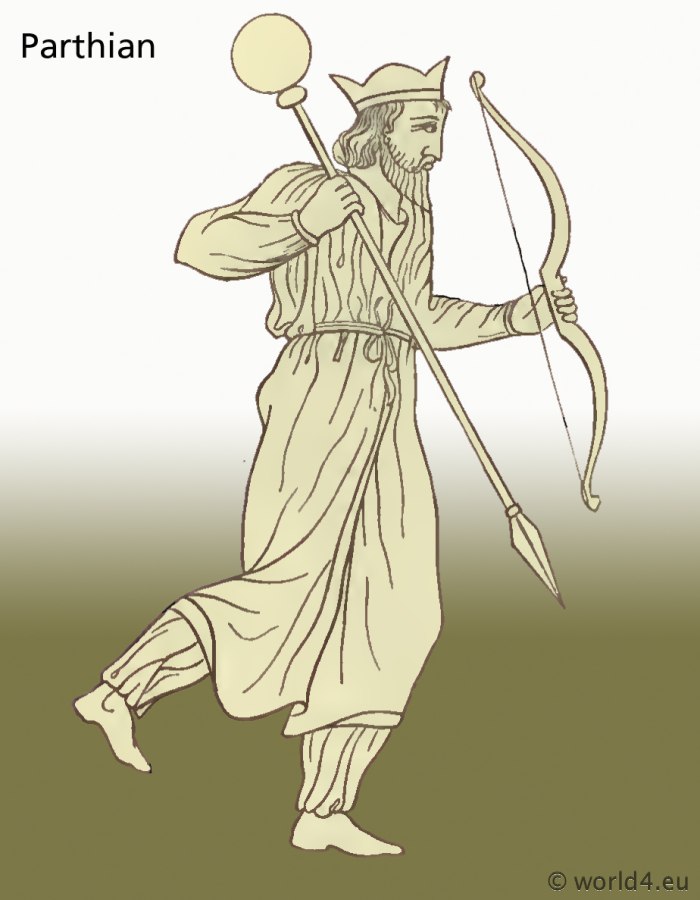
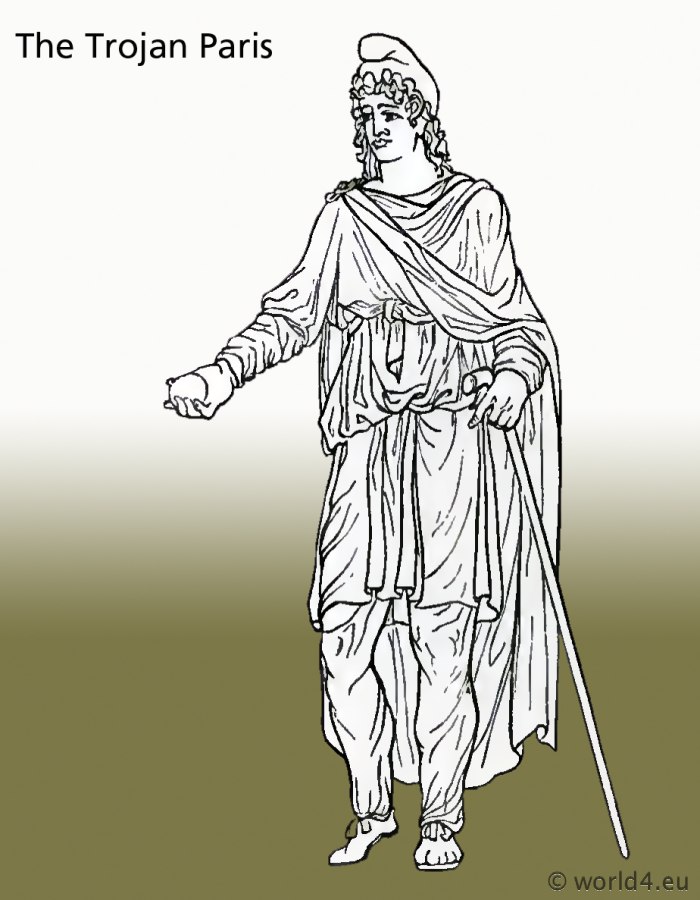
This addition was the clothing of the legs independently and completely down to the feet; a custom invariably observed by them through all their migrations, unaffected by change of climate or form of government. In brief, the nations of the ancient world might be fairly divided into two great groups or classes, the trousered and the untrousered.
Amongst the latter were the Greeks and the Romans, deriving their origin, as it appears to be generally acknowledged, from the bare-legged Egyptians; while two great branches of the Scythes or Northern Asiatic family, which had overrun Europe and colonized the south of Britain long previous to the Roman invasion, viz. the Cimmerians and the Celtic, wore the distinguishing close Trousers or loose pantaloons called by them braces or brachia.
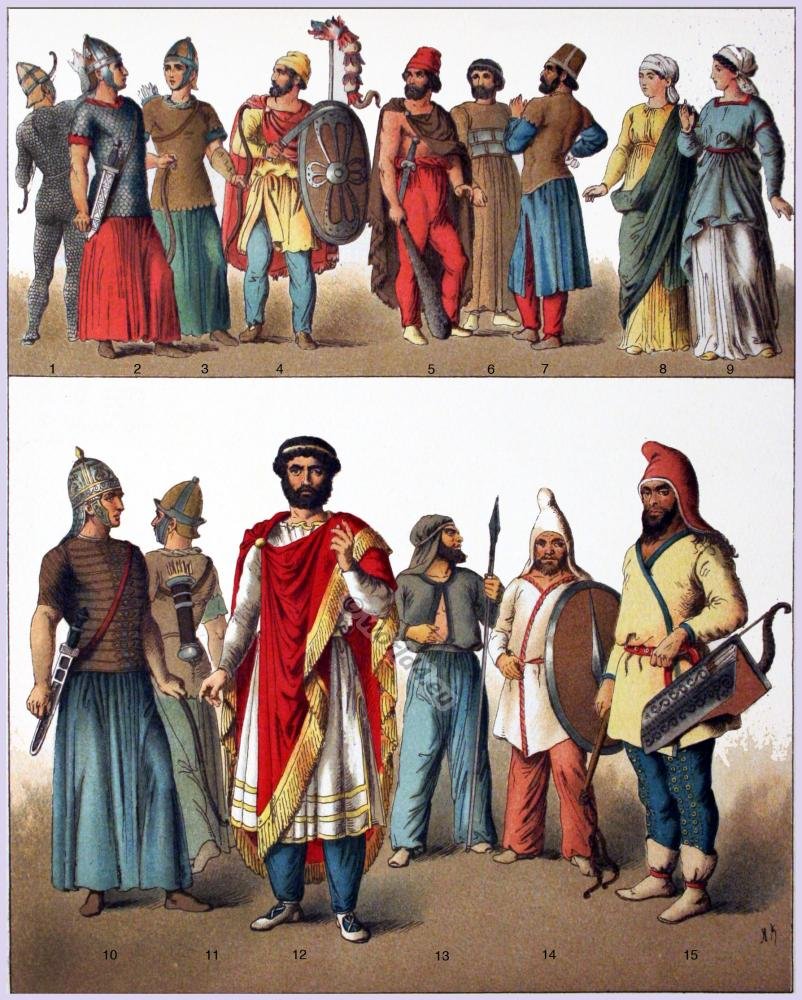
East Europe Ancient Times. Sarmatian and Dacian clothing.
Sarmatians: Warriors. 1.2.3.4.10.11. Dacians: Warriors 5.6.7. Women. 8.9. King.12. Soythians: Warriors. 13.14. Prince 15.
by James Robinson Planché.
On the origin of the pants.
The pants are the characteristic garment of the male sex. Its history reaches back to the earliest antiquity, as Persians and Hebrews wore long pants. They carried on the one hand, to the rough air-exposed Legs to protect them from cold, on the other hand, from the need to bare legs and genitals to escape the sight. The Greek and Roman costume was originally foreign to the pants, and put the Romans nothing more astounding than the Bottoms of the defeated Gallic of them. Therefore they called the conquered country braccata Gallia (Gallic-supporting trousers).
The original Germanic trousers consisted initially of loose cloth (See today’s puttees), later of two separate, sleeveless shaped, long stockings, which covered only the lower leg, the abdomen but left completely free. To cover the pubic area and thighs but usually a shorter long pants, “breaks” was called, worn, which was put in those long stockings. But even these are often summoned to the exposure, once the “bruche” slipped out of the pantyhose.
A passage in the Chronicle of Mainz from 1367 states that the dishonest parts already appeared when walking or sitting, and if someone is bent, the buttocks was visible. In the Middle Ages changed the fashion of trousers from the sense that they were sometimes long, sometimes short, sometimes well, sometimes worn tight. And with the development of fashion came to light as in the medieval women and among men with the intention of sexual incitement Exhibition and clear accentuation everywhere.
Already in 927 the Archbishop Adalbert summoned a synod of Reims, in which he inveighed against the shameless dress of the clergy. The priests wore trousers, he said, among other things, would have a width of six feet, yet because of the transparency of the material would escape even the private parts from view. No less “shameless” was the end of the 14th Century worn tight “breaks” through which the natural play of the muscles of the buttocks was visible down to the feet and the genitals clearly marked.
Around the middle of the 15th Century were sewn together, the two legs. As a result, but the narrowness of the pants, the voltage across the lower abdomen was unbearable, the pants were provided with a bib or a codpiece. The shape of these pants (braguettes) “seized the men what they should cover it, according to cheeky” (John Scher). The preachers were zealous of the Middle Ages in vain against this fashion, sought to imitate the external male genitalia.
The “Braguette” was originally a leather sheath, connected very separate from his pants and only through this node, or needles. She was originally a means of protecting soldiers in battle. This protected their genitals by a sponge always provided with a metal box, which was later replaced by a steel mesh and a leather pouch. Finally, these pants bibs made of linen and silk fabrics were made and then a part of the bourgeois clothing.
To draw even more attention to it, decorated it with ribbons, and even with gold and jewels. And even today, are the pants of leather pants bibs in Bavaria usually equipped with striking embroidery! These breeches in the bare knees of the sinewy and strong mountain man by the short pants and a necessary addition to be forming tight-fitting knee stockings (Stutzen, socks) to the eye made very apparent, was only re-declared in 1913 by the archbishop’s chair in Munich as immoral. Flags of leather pant-wearing men were denied the church’s consecration, even if this flag was religious pictures!
The trousers as female garment can be found working as a costume for dairy maids or female oystercatchers. As the main item of clothing she is still worn today by women of the Eskimos and the Indo-Chinese and Mohammedans in three continents. And when riding a bicycle at the end of the last century, came into fashion, you could see almost more women in trousers than in skirts on the street. Despite this however, in 1911 by Frenchman Poiret used “Jupe – culotte” (Culottes), not naturalized in the women’s world because so wrote a lady … we lose the divided skirt, the interest of man on our bodies. “
Now, not only today but pants, but also lower – trousers, the “unspeakable” worn. The women’s trousers is much older. It is twice as old as the men’s underpants. Because even in the 18th Century were women, but only the dancers, like Casanova writes, “upon the exercise of their profession” trousers. That it was not before, and more generally, makes the many medieval dance prohibitions explained. So you had to be preferably limited to chastise dance. A general achievement were the only female trousers since the days of crinoline.
At that time, had as a result of the widely projecting skirts all women must wear trousers that reached almost to the ankles. Gradually they moved up higher and higher, and an elegant woman of today (1920), they may never reach below the knee, the most fragrant lace may still fall over.
by Max Marcuse.
Source:
- Max Marcuse (1877 – 1963), Handbook of sexology. Encyclopedia of natural, cultural and scientific sex education of the people, 1923.
- A cyclopedia of costume, or, dictionary of dress, including notices of contemporaneous fashions on the continent; a general chronological history of the costumes of the principal countries of Europe, from the commencement of the Christian era to the accession of George the Third, by James Robinson Planché. London Chatto and Windus 1876-79.
Related
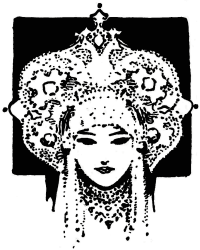
Continuing
- Roman Costume and Fashion History.
- Roman clothing in its diversity and development.
- The early toga. Former roman clothing. 700 BC. – 500 BC.
- The Toga and the manner of wearing it.
- The toga of a Roman senator. The armor of a Roman general.
- The costume of the Roman women. Republican Rome.
- The usual Roman garment during the Republican Rome.
- Roman Republic. Senator in the toga. A commoner in the paenula.
- The Togatus and the Roman ladies of the imperial period.
- The Roman Tunica or the Dorian and the Ionian chiton.
- Musical instruments. Wind and Stringed instruments of ancient Rome.
- Roman headgear and hairdos of antiquity.
- The Roman army. The legionary soldier. Equipment, assault weapons.
- Military of ancient Rome. Roman legions. Field signs. The legionary eagle.
- Roman soldiers and gladiators. Function, armor and armament.
- The Roman legionary. Reconstructed after reliefs of the Trajan’s Column.
- The Lictor panel. A stately Roman lictor in a rich costume.
- The Roman Paenula. The cowl or hood. Traveling cloak.
- Pontifex Maximus. Roman high priest of antiquity. Collegium Pontificum.
- An Augur. Roman official priesthood.
- The Rex Sacrorum also known as Rex Sacrificulus.
- Religious sacrificial ceremonies of Romans in ancient times.
- A quadriga. Greek-Roman Gods. The ancient greek-roman culture.
- The Clothing of the Vestal Virgins. The Cult of Vesta in ancient Rome.
- Shoes of antiquity. Sandals, closed footwear of the ancient world.
- The Etruscans. Culture, costumes, warriors in Etruria.
- Greek-Roman furniture. Throne chair, Bisellium, Sella castrensis.
- Greek-Roman art. Mosaics, painted bas-reliefs and wall paintings.
- A quadriga. Greek-Roman Gods. The ancient greek-roman culture.
- The Roman Ornament. Corinthian and Composite Capitals. The Acanthus.
- Rome. The atrium. Interior of an ancient Roman palace.
- Pompeji. Roman architecture. The Pompeian House. The Atrium.
- The Roman Pantheon, a temple to all the Gods.
- Britain under Roman rule. Celt and Roman. England 43 BC to 440 AD.
- Hadrians Wall. Roman Britain. Maps, Places, Tribes.
- The Gallic and Gallo-Roman costume period.
Discover more from World4 Costume Culture History
Subscribe to get the latest posts sent to your email.


